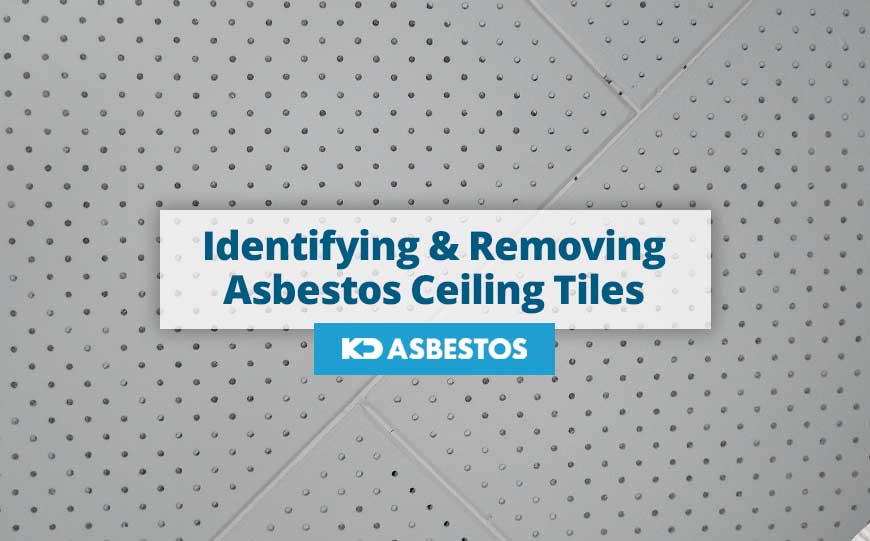
When the word ‘asbestos’ is mentioned, the first thing that comes to mind is ‘danger’.
While it’s a well known fact that asbestos is dangerous, there’s still many who do not know whether asbestos is present in common materials in their homes or in other buildings.
Sadly asbestos was used in all sorts of ways for many years – from ceiling and floor tiles, to cement, adhesives and sealants, to mention just a few.
And while such products were discontinued several years ago, there are still buildings which comprise them in their walls, floors and ceilings to this day.
Table of Contents
What is Asbestos?
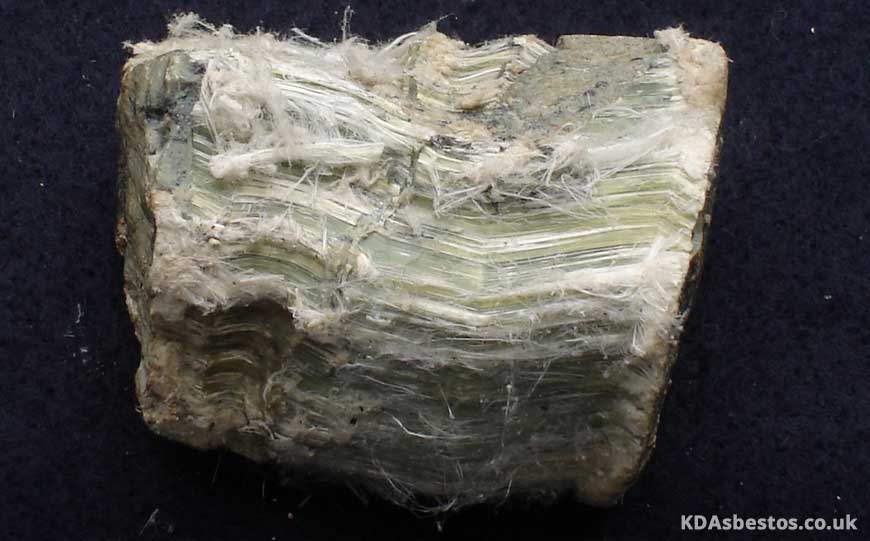
Asbestos is a naturally occurring mineral found in rocks and soil.
It is composed of soft, flexible fibres.
Since it is highly resistant to heat, electricity as well as corrosion, it was added to offer fireproofing properties and more durability.
When these fibres become airborne and are inhaled, they will lead to various diseases and health problems, which could also be fatal.
As a result, laws were passed in an effort to ban the use of asbestos products.
Why is Asbestos in Ceiling Tiles?
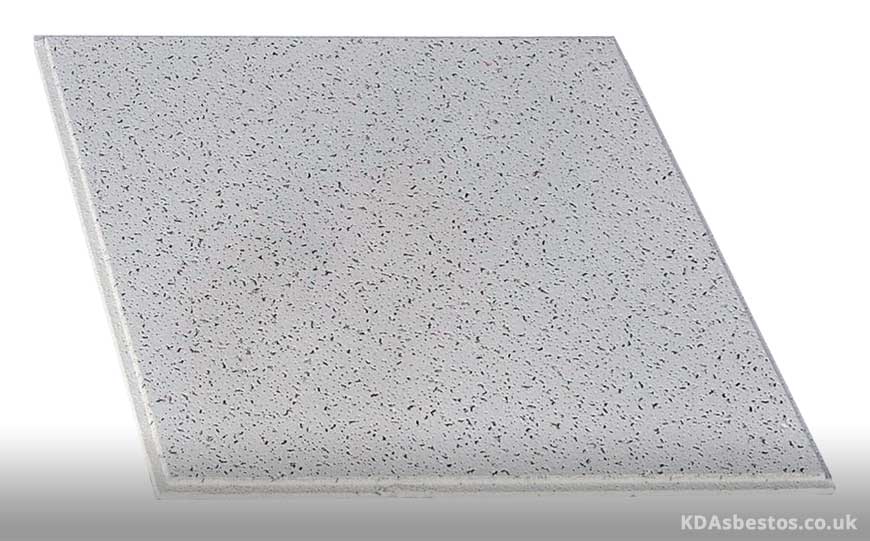
Asbestos was used in ceiling tiles to make them more durable and fireproof.
Asbestos improves heat resistance as well as insulation.
It was also used for adhesive materials which were used to bound sections of tiles together, as well as for the tile insulation.
Asbestos fibres were commonly used to make acoustic asbestos tiles too.
The asbestos fibres were bonded with other materials such as vinyl, in order to make tiles.
Besides these positive properties, asbestos was low in terms of cost.
The use of asbestos for ceiling tiles started around the 1950s and continued well into the 1980s, until the mineral started to become more highly regulated once its health risks became more known.
Where to Find Asbestos Ceiling Tiles
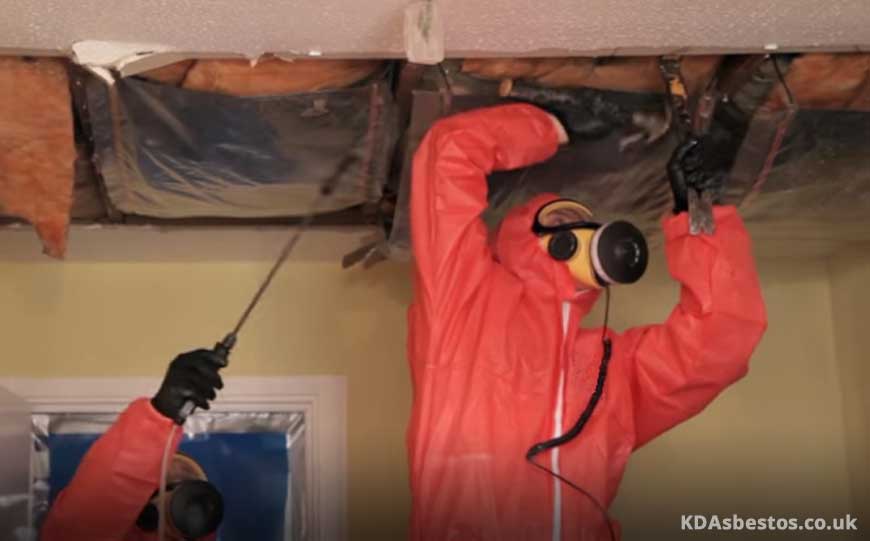
Asbestos ceiling tiles were used until the late 1980s.
Asbestos was a common additive to many ceiling treatments for several years.
It was used in tiles as well as in the paper backing for tiles, and adhesives used to affix tiles together.
Asbestos popcorn ceilings were very common back then too.
Unfortunately, asbestos ceiling tiles can be found in various buildings which were built in those times.
This can include schools, warehouses, hospitals, as well as homes built back then.
Asbestos containing ceiling tiles were mostly common in kitchens as well as in basements in order to cover ductwork.
Asbestos ceiling tiles were also referred to as suspended ceilings, drop ceilings and acoustic ceilings.
If the building was constructed or renovated before 1980, there is a good chance that asbestos containing tiles were used.
An asbestos survey will be able to determine if the ceiling tiles contain any hazardous material.
Most asbestos ceiling tiles were usually produced in 9” x 9” square sizes.
What Do Asbestos Ceiling Tiles Look Like?

Unfortunately it is not that simple to identify whether tiles are asbestos tiles or otherwise.
Asbestos fibres are microscopic, and hence they will not be visible to the naked eye.
Moreover, not all tiles used in the 20th century necessarily contain asbestos.
Square tiles which were installed between the 1920 and 1980 have a high probability of containing asbestos.
If there is a trademark pinhole mark, and a powdery appearance, there is also a good chance that asbestos fibres are present.
Asbestos ceiling tiles are usually light and the surface has mild texturing.
While such visual indications, along with the size of the tiles and their installation date might offer an idea of the possibility of asbestos being present, only an asbestos test can verify this.
To be completely sure whether asbestos fibres are present, one would need to hire a professional asbestos contractor to inspect the tiles and take samples to carry out tests.
Types of Asbestos Ceiling Tiles
If your house was built after the mid-1980s, chances that asbestos tiles were used are very small.
However, do consider any renovations that may have taken place, especially if renovations were made to the ceiling.
You may wish to check the manufacturing company of the tiles.
Asbestos products used to be produced by various companies, including:
- National Gypsum
- Flintkote Company
- Conwed
- Armstrong Corporation
- Celotex
- Affa Tile Company
- Owens-Corning Fiberglas
Sadly, these companies were aware that the mineral was dangerous, but still continued to produce their products regardless.
Besides the tiles, it is also worth considering other related products.
For instance, acoustical plaster was often made from asbestos.
So were acoustical panel designs.
These are often found in recording studios, auditoriums, performance halls, lecture theatres and churches.
Removing Asbestos Ceiling Tiles
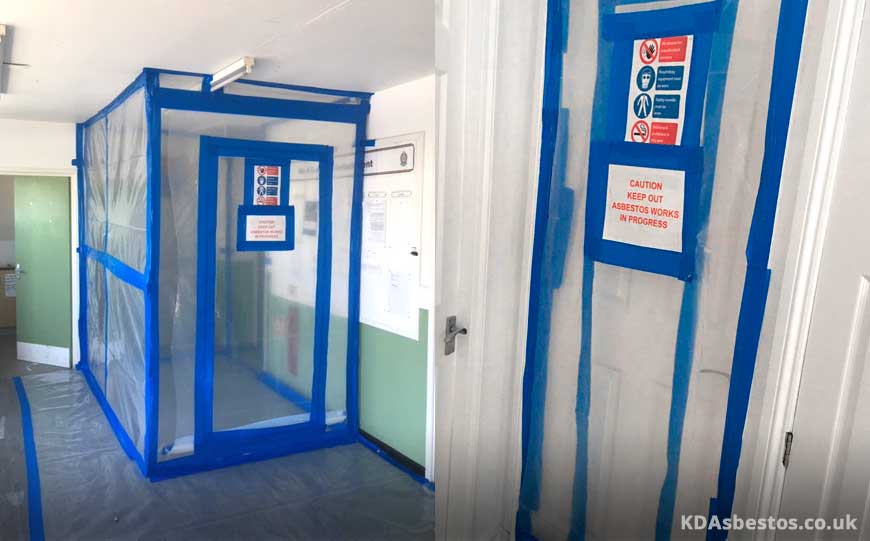
If asbestos is present in your ceiling tiles, one of the options is to remove such tiles.
It is important to hire a certified and licensed asbestos specialist to see to this job as it is a dangerous task.
The contractor will start by inspecting the building, take samples to a lab for testing, and if asbestos is indeed present, a cost estimate for the removal of the tiles will be provided.
Removing asbestos tiles will typically cost between £6.00 and £11.00 per square foot, but one will also need to consider the replacement of the old tiles.
The contractor will close off the area where the work will be carried out.
The ceiling will be dampened to prevent the asbestos fibres from becoming airborne.
Proper disposal will also be handled by the contractor.
Encapsulating Asbestos Ceiling Tiles
Encapsulation is another option.
This involves covering the ceiling tiles so that the fibres within them will not be able to become airborne.
Generally drywall is used to cover them up.
As with removal, it is best to hire a professional to make sure that the job is handled properly and safely.
This option is generally preferred if the tiles are in a relatively good condition.
However it is not considered as a long-term solution, as at the end of the day the asbestos will still be there, and there will always be some concern in case disturbance occurs in the future.
Degradation of the tiles over the years will also need to be taken into account, as in such cases the asbestos could still become airborne.
Is Removing Asbestos Ceiling Tiles Dangerous to Health?
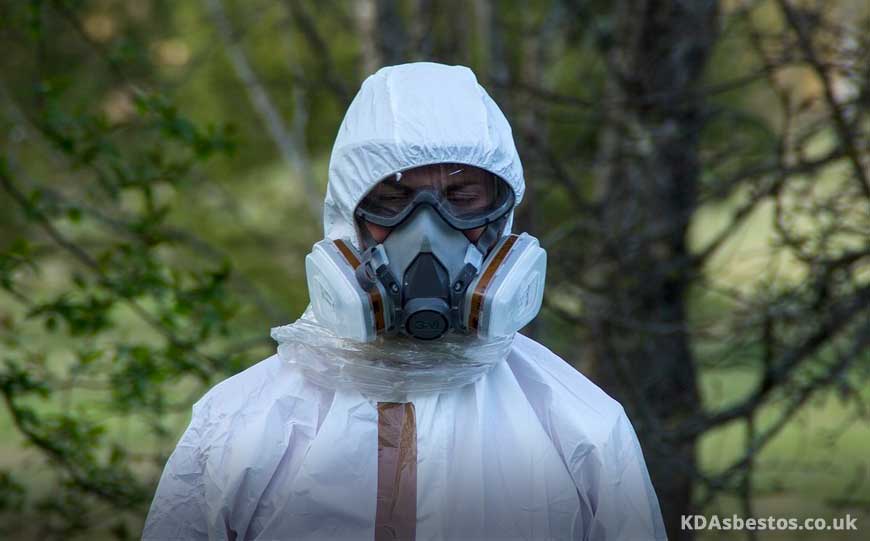
During the removal process, asbestos-containing tiles will get disturbed and damaged.
As a result, asbestos fibres could easily end up becoming airborne.
If the job is not carried out by a professional asbestos contractor, there are many health risks involved as inhalation or ingestion of such fibres is highly hazardous.
The asbestos fibres will settle in the lining of the internal organs such as the lungs.
This causes irritation, which after several years often leads to health problems and conditions, including:
- asbestosis
- pleural thickening
- mesothelioma
This highlights the importance of hiring a professional person to deal with asbestos tile removal as a proper process will be carried out, from wetting to disposal.
Such a contractor will also have the necessary expertise and equipment to carry out the job safely.
Disposing of Asbestos Ceiling Tiles
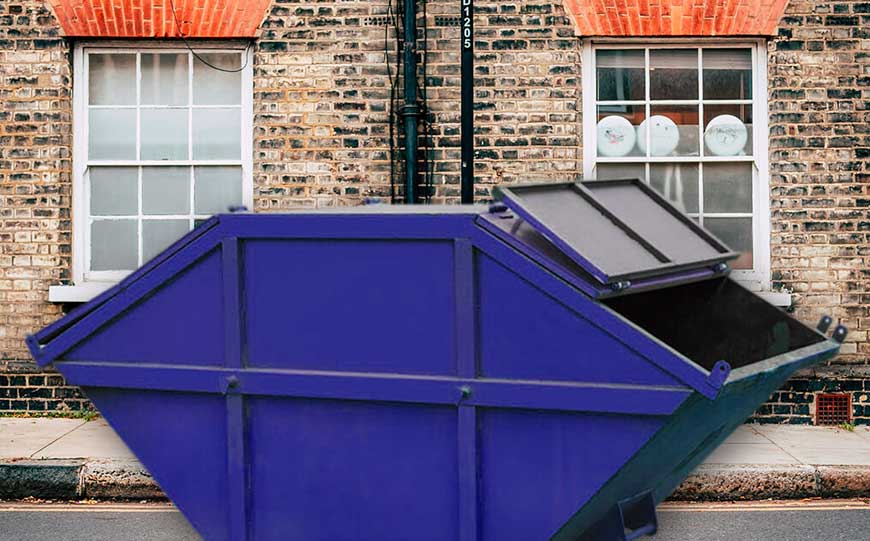
Once the tiles are removed, the professional contractor will also take care of the disposal of all the waste material.
The tiles and other waste will be packed up safely and taken to designated waste disposal sites.
Using Licensed Asbestos Professionals
A licensed asbestos professional is of imperative importance if you suspect that asbestos might be present in the tiles or other parts of your property.
Besides carrying out the sampling and asbestos testing process, such a professional will also be able to handle the removal process or any other tasks associated with asbestos.
Advice will also be provided with regards to the best option depending on the tiles’ condition and level of friability.
Conclusion
There is no denying that asbestos is very dangerous.
Thus it is critical to handle it with great care and to leave the job in the hands of a professional contractor.
Even though asbestos was banned several years ago, it is still possible that there could be tiles or other materials in your property which contain asbestos.
This is especially the case if the property was constructed prior to the 1980’s.
Hence, it’s best to be careful and carry out testing to verify whether asbestos is present or not.
Then deal with the tiles or any other materials properly and safely, depending on the condition they’re in.